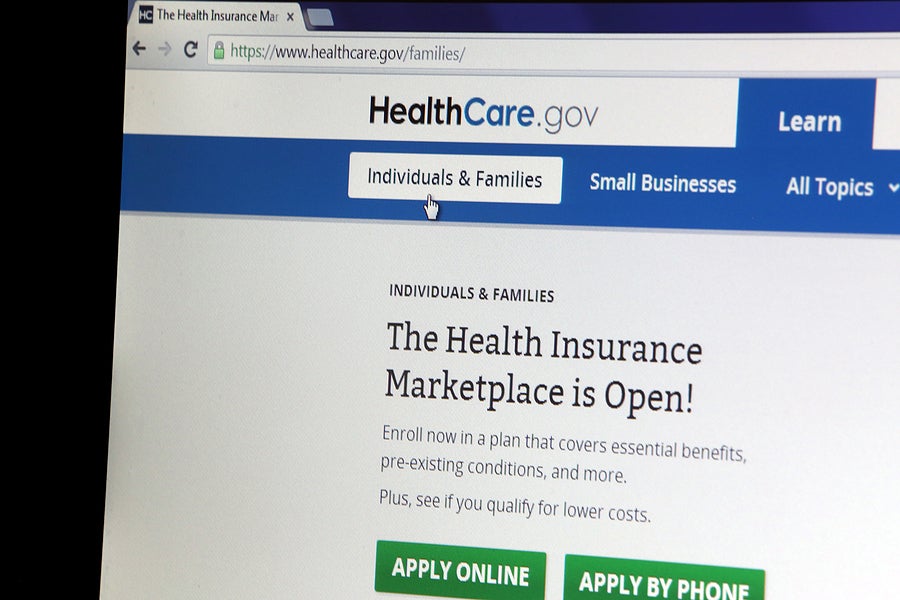As readers of Say Ahhh! know, I have been tracking monthly data (here, here, here, here and here) from the Centers for Medicare and Medicaid Services (CMS) on the number of people who were either previously enrolled in Medicaid or had experienced a denial or termination who then selected a marketplace plan. At the end of December, CMS issued new data for September 2023.
In September, another 1.66 million people lost their Medicaid coverage due to unwinding of the Medicaid continuous coverage protection, of which about 65 percent were for procedural disenrollments and 35 percent were due to a finding of ineligibility. Separately, CMS reported that about 222,000 people who were either previously enrolled in Medicaid in federal marketplace states or had experienced a denial or termination in state-based marketplace states selected a marketplace plan in the same month. That constituted only about 13.4 percent.
Growth in total marketplace enrollment among those losing Medicaid actually declined in September. Compared to total marketplace enrollment among those losing Medicaid in August, September enrollment was 3.5 percent lower. (In August, growth in total marketplace enrollment slowed dramatically compared to July.) However, the rate of marketplace enrollment among those disenrolled from Medicaid increased (compared to 11.6 percent in August) because the number of Medicaid disenrollments fell by 16 percent compared to the levels in August. (Another 34,000 or 2.1 percent enrolled in a Basic Health Plan in New York and Minnesota in August, with nearly all of that BHP enrollment occurring in New York.) Cumulatively, through September, compared to the 9.2 million people disenrolled from Medicaid, about 1 million or only 11.4 percent enrolled in marketplace plans. (The figure rises to 13 percent if including Basic Health Plan enrollment.)
As each of the blogs about previous CMS data releases noted, to provide context to these figures, last year, federal researchers projected that of the 15 million people expected to lose Medicaid during the unwinding, nearly 2.7 million people — or about 18 percent —would be eligible for subsidized marketplace coverage. While this data represents only the outcome of unwinding through September, it indicates that marketplace transitions for those disenrolled from Medicaid are still falling short of the expected pace even as overall marketplace enrollment continues to soar to historical highs. It is also important to note that CMS determined that only 4 percent of people leaving Medicaid and CHIP in 2018-2019 in federal marketplace states subsequently enrolled in marketplace plans. And of course, for children losing Medicaid, even with the enhanced marketplace subsidies, children accounted for only about 9 percent — or 1.55 million — of total marketplace enrollees during the 2023 Open Enrollment Period.
Marketplace plans will be a valuable source of affordable, comprehensive health coverage but only for a relatively modest number of people, especially children, who lose their Medicaid coverage during unwinding. Instead, it’s critical for state Medicaid programs to reduce the persistently high rates of procedural terminations for children, parents and other adults, most of whom are likely to remain eligible for Medicaid. This includes ensuring states are in full compliance with all federal requirements for Medicaid renewals and states taking up more of the renewal flexibilities provided by CMS, such as pausing all Medicaid renewals for children for one year as Kentucky and North Carolina have recently done.
At the same time, to increase child Medicaid enrollment to offset these large coverage losses from unwinding, states should also take up various actionable strategies to promote continuous coverage for children and families, as recently reinforced in a CMS Informational Bulletin issued in December. States should also take up multi-year continuous eligibility for children, which an increasing number of states are adopting, in addition to successfully implementing mandatory 12-months continuous eligibility for children, which took effect on January 1, 2024. Finally, states and the federal government will need to work together on robust outreach and enrollment efforts in 2024 to target eligible children, families and other adults who were terminated for procedural reasons so they can be reenrolled in Medicaid as quickly as possible.


